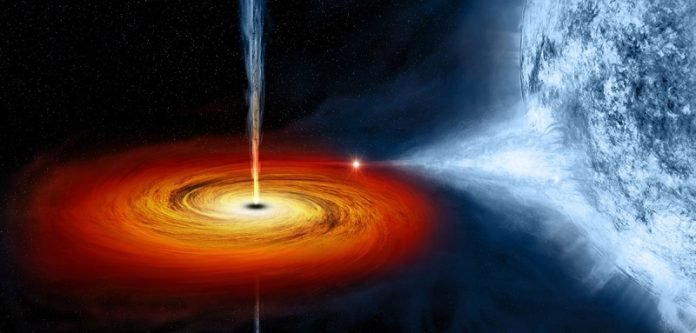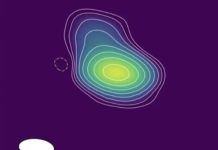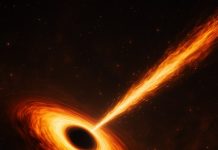
Scientists have made a groundbreaking discovery about black holes, confirming a key prediction made by Albert Einstein over a century ago.
An international team led by researchers from Oxford University has provided the first observational proof that “plunging regions” exist around black holes.
These are areas where matter stops circling the black hole and falls straight into it.
Using X-ray data, the team tested Einstein’s theory of gravity, showing that the gravitational forces in these regions are some of the strongest found in our galaxy.
Their findings have been published in the Monthly Notices of the Astronomical Society.
This research is part of a broader effort to solve some of the mysteries surrounding black holes.
The Oxford team focused on smaller black holes relatively close to Earth, using data from NASA’s Nuclear Spectroscopic Telescope Array (NuSTAR) and Neutron star Interior Composition Explorer (NICER) telescopes.
Einstein’s theory predicted that particles close to a black hole cannot follow safe circular orbits but instead plunge rapidly towards the black hole at nearly the speed of light. The Oxford study is the first to deeply explore this plunging region using X-ray data, providing a better understanding of the intense gravitational forces at play.
Dr. Andrew Mummery, who led the study, explained, “This is the first look at how plasma, peeled from the outer edge of a star, undergoes its final fall into the center of a black hole, a process happening in a system around ten thousand light years away. What is really exciting is that there are many black holes in the galaxy, and we now have a powerful new technique for studying the strongest known gravitational fields.”
He added, “Think of it like a river turning into a waterfall. Until now, we have been looking at the river. This is our first sight of the waterfall.”
The discovery of the plunging region is a significant step forward in understanding black holes. It allows scientists to investigate the final areas around them and fully understand the gravitational force.
Astrophysicists have long debated whether the plunging region would be detectable. The Oxford team spent years developing models and has now confirmed its existence using X-ray telescopes and data from the International Space Station.
While this study focuses on small black holes closer to Earth, another Oxford team is part of a European initiative to build the Africa Millimetre Telescope. This new telescope will enhance our ability to capture direct images and videos of large black holes, including those at the center of our galaxy.
The study, “Continuum emission from within the plunging region of black hole discs,” marks an exciting new chapter in black hole research, opening up new possibilities for understanding these mysterious cosmic objects.
Source: University of Oxford.



